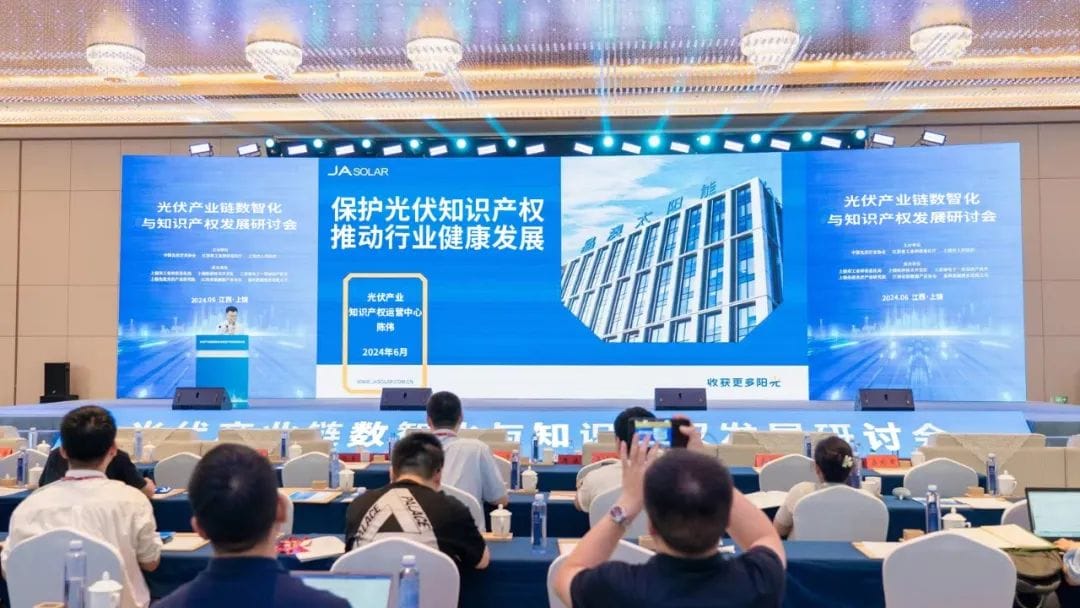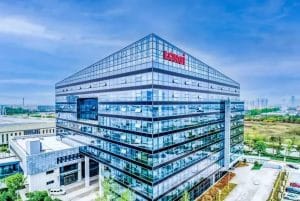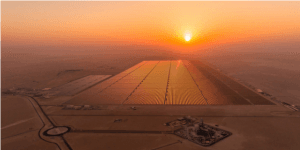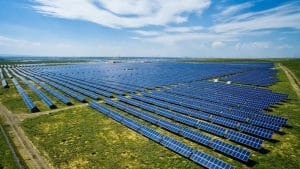At the just-concluded China Intellectual Property Annual Conference, a China Photovoltaic IP Operations Director said: China is transforming from a leading photovoltaic manufacturing country to a leading photovoltaic IP innovation country.
- Two changes in photovoltaic intellectual property rights:
In the past, Chinese photovoltaic products encountered patent litigation around the world; once, China’s mass-produced shingled modules were strangled in the cradle by patent disputes. After China’s photovoltaic manufacturing continues to lead for many years, China’s photovoltaic industry is undergoing two major changes:
Global scientific research results are being transformed by Chinese companies into production process patents;
The latest photovoltaic scientific research results are being released by more Chinese companies.
Chen Wei, executive deputy director of the China Photovoltaic Industry Intellectual Property Operation Center, quoted data from the “2023 Photovoltaic Intellectual Property Development Report”: “In 2022, the China Photovoltaic Industry Intellectual Property Operation Center will account for more than 80% of the capacity and output at all stages of the solar photovoltaic supply chain. , including polysilicon, silicon wafers, cells and modules.”
In addition to photovoltaic manufacturing, Chinese companies have significantly increased investment in research and development (R&D). In recent years, some Chinese photovoltaic leaders have invested around 5% of their business revenue in photovoltaic technology research and development, which is a significant investment given the specialized nature of photovoltaic technology.
On the world’s best photovoltaic cell efficiency roadmap published by the U.S. Department of Energy’s NREL Laboratory, more and more Chinese photovoltaic companies and research institutions are on the list and have become contributors to the best cell efficiency chart. This shows that China’s strong manufacturing strength and huge R&D investment in photovoltaics have encouraged more innovation and produced more and more leading results.
- Active protection of photovoltaic intellectual property rights
In the initial stage of China’s photovoltaic manufacturing, the expansion of production capacity was accompanied by the “introduction of advanced technology”. To put it bluntly, it was about “copying without distortion”. The consequence is that when China’s photovoltaic manufacturing forces its overseas rivals into bankruptcy, it also falls into endless “patent litigation” disputes.
In the second decade of the 21st century, overseas companies basically said “you have infringed the patent”, while Chinese companies said “I don’t have it, this is my own patent.”
With the “Sinicization” of global photovoltaic production capacity for many years, overseas photovoltaic companies have either gone bankrupt many years ago or are struggling on the verge of death with weak production capacity. In the past ten years, they have almost no ability to invest in the latest technology. Battery and component process research and development.
When photovoltaic power generation enters the third-generation TOPCon, SHJ heterojunction, and BC era, the contributions of Chinese companies begin to take an absolute advantage. According to data from the “Photovoltaic Intellectual Property Development Report 2023”, China’s annual solar patent applications soared from 40.8% of the global total in 2014 to 82.6% in 2021. By 2022, the cumulative number of applications will exceed 175,000, accounting for the global total. 48%.
The report said China currently has 33,970 valid patents in key photovoltaic technologies, including raw materials, silicon wafers, cells and modules, accounting for 48% of the world’s total patents, equivalent to the total number of patents in the United States, South Korea, Japan and Europe.
This year’s Global Photovoltaic Conference (SNEC) sent a clear signal: intellectual property protection is crucial and urgent. Photovoltaic tycoons such as Gao Jifan, Zhong Baoshen, and Zhu Gongshan have all spoken out loudly that the entire photovoltaic industry should fully respect and protect intellectual property rights, which is urgent.
Tianhe Gao Jifan said: “If intellectual property rights are not effectively protected and infringement of intellectual property rights becomes widespread, and cross-border and cross-industry companies and executives of original companies go out to start businesses and infringe other companies’ intellectual property rights at will, which company can succeed?” Are there incentives to invest billions or even tens of billions in technological innovation and research and development? If infringement of intellectual property rights cannot be severely punished, it will be impossible to embark on an ‘innovation-oriented’ high-quality development path.”
LONGi Zhong Baoshen believes that in the past few years, the core of photovoltaics has been driven by innovation, but there has been a lack of technology and intellectual property protection, which has led to the proliferation of the entire technology too quickly and led to everyone adopting it. Therefore, in terms of intellectual property, We need to step up protection efforts.
Zhu Gongshan of GCL said bluntly: “So far, there are only a few professional academicians and national laboratories in the photovoltaic field. The investment of national capital in the manufacturing end and the allocation of related resource factors are exciting. Industrial resilience and self-discipline still need to be improved, and intellectual property protection still needs to be improved.” It’s far from enough.” He called on the industry to respect the laws of science and technology, not to encourage others, respect intellectual property rights, build an open and collaborative ecological chain, and work together to break into the technology no-man’s land. “
- “Infighting” over photovoltaic intellectual property rights
As Chinese photovoltaic companies began to take the “initiative” of intellectual property rights such as industry patents, Chinese photovoltaic companies also began to “actively defend their rights.” Industrialized intellectual property disputes shifted from Chinese/foreign companies to Chinese companies.
In the past two years, several patent lawsuits have occurred among industry leaders such as Trina, Longi, Tongwei, Runyang, Canadian Solar, and Zhonghuan. In addition to litigation in court, there have also been cases involving customs before exporting offshore. Seizure. The intellectual property dispute between Chinese photovoltaic companies has escalated from a war of words to an economic war, a court war, and a customs war.
At the “Photovoltaic Industry Chain Digital Intelligence and Intellectual Property Development Seminar” held in June 2024, JinkoSolar made a report on “Photovoltaic Enterprise Intellectual Property Protection and Management System Construction” and recommended that through the establishment of intellectual property strategic planning and the establishment of scientific Intellectual property incentive mechanism, active cooperation in the intellectual property industry, and improvement of intellectual property risk management and control capabilities to build an intellectual property system.
Huawei Digital Energy’s report “Challenges and Reflections on Intellectual Property Protection in the Smart Photovoltaic Industry” pointed out that Chinese companies have achieved partial technological leadership in fields such as photovoltaics and energy storage systems, but innovations are easy to imitate, posing challenges to the protection of commercial value and R&D investment. . Chinese companies need to continue to strengthen their patent strength to match their market position in the field of smart photovoltaics.
JA Solar’s report on “Protecting Photovoltaic Intellectual Property Rights and Promoting the Healthy Development of the Industry” stated that the photovoltaic industry must improve the quality of intellectual property rights and, secondly, realize the value of intellectual property rights. Intellectual property rights must be transformed from cosmetic certificates into legal weapons to protect innovative achievements, and patents must be not only a sign to promote an enterprise’s innovative capabilities, but also a tool used to occupy the market.
No matter what, China Photovoltaics has superimposed IP leadership on the basis of being a manufacturing power. The next thing to consider is how to expand the leading advantage, how to continue to maintain the IP leadership, and how to create more high-quality IP? With this, we don’t have to worry about the so-called photovoltaics made in the United States, Europe, or India.




